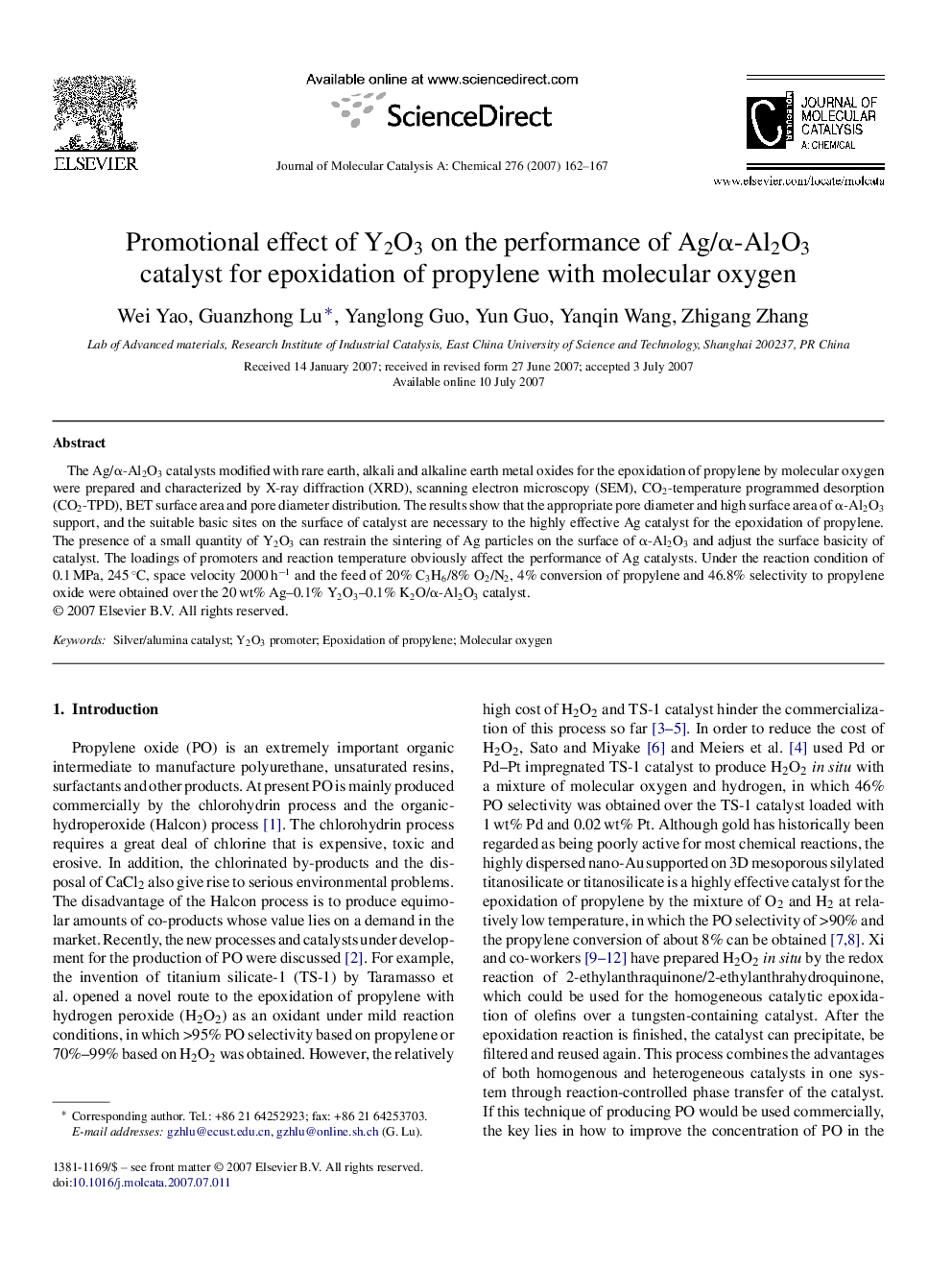| Article ID | Journal | Published Year | Pages | File Type |
|---|---|---|---|---|
| 68688 | Journal of Molecular Catalysis A: Chemical | 2007 | 6 Pages |
The Ag/α-Al2O3 catalysts modified with rare earth, alkali and alkaline earth metal oxides for the epoxidation of propylene by molecular oxygen were prepared and characterized by X-ray diffraction (XRD), scanning electron microscopy (SEM), CO2-temperature programmed desorption (CO2-TPD), BET surface area and pore diameter distribution. The results show that the appropriate pore diameter and high surface area of α-Al2O3 support, and the suitable basic sites on the surface of catalyst are necessary to the highly effective Ag catalyst for the epoxidation of propylene. The presence of a small quantity of Y2O3 can restrain the sintering of Ag particles on the surface of α-Al2O3 and adjust the surface basicity of catalyst. The loadings of promoters and reaction temperature obviously affect the performance of Ag catalysts. Under the reaction condition of 0.1 MPa, 245 °C, space velocity 2000 h−1 and the feed of 20% C3H6/8% O2/N2, 4% conversion of propylene and 46.8% selectivity to propylene oxide were obtained over the 20 wt% Ag–0.1% Y2O3–0.1% K2O/α-Al2O3 catalyst.
Graphical abstractThe Ag/α-Al2O3 catalysts modified with rare earth, alkali and alkaline earth metal oxides for the epoxidation of propylene by molecular oxygen were prepared and characterized by XRD, SEM, CO2-TPD, BET and pore diameter distribution. The results show that adding 0.1 wt% Y2O3 into the Ag/K2O/α-Al2O3 catalyst increases the selectivity to propylene oxide from 4.3% to 46.8% with 4.0% conversion of propylene at 245 °C.Figure optionsDownload full-size imageDownload as PowerPoint slide
